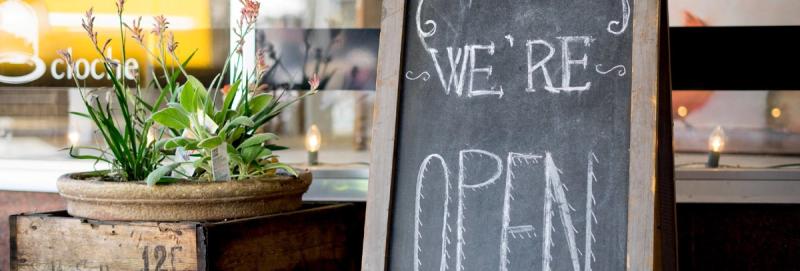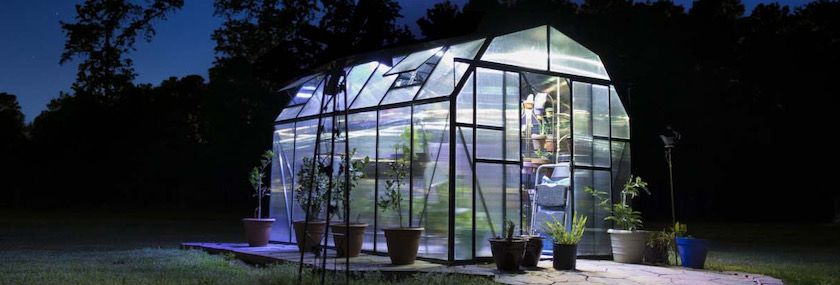The Truth About Small Town Life


Growing up in a small town, you learn some things about the kind of life it produces.
As a kid, you learn that you don’t have too many opportunities for friends…so it works out best if you can get along with all your peers. In my case, the village I lived in had four boys about my age, so that was my peer group. We invented games like “invisible man baseball” and “lets go throw rocks in the river.”
When you live in a small town, you make your own fun.
I moved away just as girls were beginning to become interesting, but in retrospect, opportunities were depressingly spare. Still, the small town life never left, even after my family moved to a busy suburban area.
It’s the America of Walt Disney and television’s Mayberry, and those values still matter today.
The people
Yes, people are friendly, or at least friendlier, than in cities. When families move to a rural location, they quickly learn that anonymity in a small town isn’t really possible. “Oh, you’re the family that moved into the Willit’s house on the edge of town. Tell me, has that basement problem dried up yet? Oh, and your son will love Mrs. Jones in the fourth grade.”
You know who to say hello to, and who not to say hello to.
Children raised in small towns can certainly get into trouble, but they also grow up knowing that someone is always watching.
It’s true that everybody in a small town really does know everyone else. This has been studied: Four in ten rural residents say they “know all or most of their neighbors” compared with only one in four city residents. (Pew Research Center’s 2018 “What Unites and Divides Urban, Suburban and Rural Communities”)
You may be on nodding acquaintance with someone in the community, but if your dog is hit by a car or your aunt falls and breaks a hip, everyone will know shortly; many will offer sympathy.
This intimate knowledge has benefits. You may come home one day to find a casserole left on the kitchen counter for you.
The small businesses
“Shop at home” was once the only means of consumerism, but today people seem to be giving it lip service only. It’s true that when you buy from a small business you’re helping a little girl get dance lessons, and help a family put food on the table. Small business owners really do try hard to make a go of it, but often times they are thwarted by lack of experience, lack of capital, and ultimately lack of customers.
Rural families still plan on trips “to the city” to take in a college or professional sports game and while there will stock up at Costco, Total Wine, and Target. The selection is far greater in the city—to say nothing of being able to visit stores and restaurants you see only on television.
Still, successful small town businesses get to know their customers by name and habit, and vice versa. Shop owners learn what you like, and will special order and set things aside for you. They open early and will stay open late if you ask.
If there is a general store or gas station in your town, shop there. That way it’ll be there when you really need it.
The coffee shop brain trust
There’s a small town social center is where people exchange ideas, check up on each other, and solve the problems of the world. Look for a place where coffee is served without end, and the pie is fresh.
It’s the coffee shop.
Men and women usually sit segregated, by choice. Farmers coming to town are identified by their tractor or seed caps and Stetsons. The waitress will call everyone “honey” but her affection will be genuine. Cash is king, both at the register and the jukebox.
Small town coffee shops are the hub of the local information superhighway.

Small towns are more religious
Or at least it can seem that way. To be sure, a higher percentage of people in rural America can be found, dutifully, in church on Sunday mornings (or sometimes Saturday evening, just to get it out of the way). Church is important to small towns—when school buildings close, the churches often remain.
You won’t find many new born-again mega-churches because the population isn’t there to support them. But the fervor is there, only “in more subdued tones,” as one religious observer has noted.
There is a rural tradition of communities supporting their churches. Basement kitchens host all manner of gatherings, from baptisms to weddings to funerals and the occasional quilting party. Ask anyone who has ever attended: Church Lady food can’t be beat.
Small towns discover themselves
You could call it pulling yourself up by your own bootstraps, but small towns that have chosen not to die have looked to themselves to find ways to succeed. Among other things, they ask, “What have we got that no one else has? What makes us different and worth knowing?”
Empty storefronts? That equals “exciting retail opportunities.” Abandoned homes mean “low-cost housing.” Nothing nearby? Then sell yourself as “blessed with peace and solitude.”
The result of taking the bull by the horns is that many small towns find themselves regularly in Top 100 of the coolest or quaintest or something-est lists on the internet.
For example, if you love the arts, join others flocking to Abingdon, Va., population 8100 and its long-running professional theatre, or Bisbee, Ariz., (aka Greenwich Village West) with its talented 5200 residents.
Iola, Kansas (population 5500) in Allen County boasts the largest downtown square in the country…and it’s thriving, despite half the population it saw in 1910.
In part because of the lower cost to start a business, small towns have been the beneficiaries of entrepreneurial spirit. Take craft breweries, for instance. As this phenomenon has grown, micro-breweries in small towns have exploded.
A 2015 study on brand loyalty conducted by Appalachian State University revealed that “connection with the community was the most important factor in influencing brand loyalty” among craft beer aficionados. Your village may become known as “the town with the awesome pilsner” but if beer builds a connection with the community, dollars can pour in along with tourists.
Beer trails, wine trails, and whiskey trails can bring people to your small town.
Not without challenges
For the first time in recent memory, rural America saw an increase in population. It’s razor-thin—an increase of 0.1 percent, according to the U.S. Department of Agriculture’s Economic Research Service.
In general, people seek the country and small town life to leave busier urban and suburban areas, research revealed.
There are less of us, generally
The bad news is that on a rural town-by-town basis, the farm community has been dropping in number since the advent of mechanized farming, especially after WWII.
The Carsey Institute at the University of New Hampshire observed that rural areas did well in the 1970s, with population gains…and then ended in the 1980s as widespread out-migration and population decline reemerged.
What happened? The Farm Crisis that singer Willis Nelson and others brought to light drove people away.
And then there were fewer of us to work
All those who left created a “donut” in rural America that still echoes today. Said David Swenson, an Associate Economics scientist at Iowa State University, it created a “hollowing out the middle of the workforce. They contain lower percentages of people in the prime working ages of 25 to 54 because of persistent outmigration.”
In other words, much of rural and small-town American jobs are for younger and older people, as those in the prime workforce age have left for the city.
And we’re older
Just after WW II, the average age of the American farmer was about 49 years old and it stayed that way through the 1970s and early ‘80s. Then the Farm Crisis sent younger people looking for work in towns and cities. Those remaining farmers were the older ones.
The average age of the U.S. farmer in 2012 (the last year the information was gathered) had climbed to 58…which doesn’t sound bad until you back out the number of “new farmers” in their 30s.
Jobs are harder to come by
A 2017 Roper poll of rural America found that 21 percent think the biggest problem they face is the lack of job opportunities. Boredom leads to problems. The 2017 Kaiser Family Foundation Survey of Rural America also noted that drug abuse is the second greatest problem, noted by 14 percent.
We are more likely substance abusers
According to a 2016 National Survey on Drug Use and Health by the Substance Abuse and Mental Health Services Administration, a higher percentage of rural, non-metro residents are more likely to be involved with problem substances: Alcohol use by youths age 12-20, use of chewing tobacco or smoking, and methamphetamine.
These are well-documented problems in rural America, particularly among younger residents. Rest assured, though, people are working on it.
When ‘small town’ is home
When you live in a small town or move to one, a few things about small town life become apparent.
Abundant wildlife, peace and quiet, fresh air, and a slower pace will lower your blood pressure. You can see stars at night. People share garden produce in the summer, and plow each other’s driveways in the winter.
Add in quick access to hunting and fishing and views that city people envy (and visit), and it’s clear that small town life is maybe the only life worth living.
Well I was born in a small town
And I live in a small town
Prob’ly die in a small town
Oh, those small communities
—From “Small Town” by John Mellencamp
Tags:Seasonal Living

Acreage Life is part of the Catalyst Communications Network publication family.
















